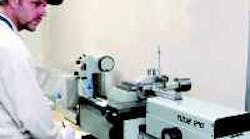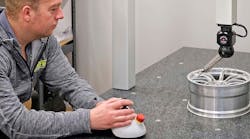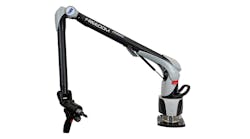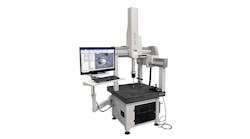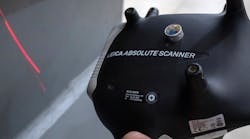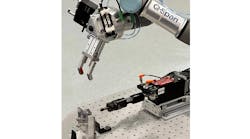When and why to outsource gage calibration.
By Chuck Shaw, Dexter Carlson, and Dave Friedel
The L.S. Starrett Co.
In-house calibration, especially comprehensive, established programs in large companies with thousands of gages, can be effective for the right application. But many smaller companies attempting to calibrate their own gages may use the wrong methods and/or tools. For these companies, outsourcing the job can eliminate inspection hassles and save them a pile of money. Firms are often misinformed as to what tools and methods are acceptable for performing calibration. Calibration isn't simply a matter of grabbing a few block gages and doing a hasty inspection with crude measurement methods. Instead, guaranteeing certifiable results requires that companies hire qualified technicians, acquire sophisticated equipment, and maintain master standards. It also demands detailed recordkeeping, training, and follow-up.
Break-even expenses for those brave enough — or large-scale enough — to attempt the job can run into the thousands. At minimum, firms are probably looking at $250,000 for initial ramp up with equipment, depending on the application, then another $100,000 to hire a few technicians. This doesn't take into account the manufacturing space required to build a climate-controlled lab. All in all, operating an in-house lab can cost more than $75,000/yr.
Unless a company has a tremendous number of gages, it can be cost prohibitive to set up an in-house calibration operation. For instance, if a firm calibrates standard gage blocks in-house — achieving a low level of uncertainty, such as ±2 or ±3 millionths of an inch — it must send a master set of blocks directly to the National Institute of Standards and Technology (NIST) at a cost of up to $40,000 for a full set of inch and metric masters.
A more cost-effective alternative is to send the blocks to an accredited laboratory that has already paid the expense of having its master blocks calibrated through NIST. Typical costs to calibrate gage blocks range from $2 to $5/block for a commercial laboratory versus $80/block when calibrated by NIST.
Cost isn't the only advantage when outsourcing. Other critical issues, such as standards, also come into play. An appropriately accredited lab will ensure that a firm meets compliance with a current standard, such as A2LA 17025. It's not uncommon for standards to change, and keeping up with the continually changing requirements can be difficult for those who are unfamiliar with the process.
Other obvious benefits are improved quality, reliability, and convenience. It's safe to conclude that if a company consistently uses a dedicated, independent source, its quality increases. Plus, larger firms benefit by standardizing their gage calibration and recordkeeping all within one source.
But companies should be cautious about where they send their gages. If going to the gage manufacturer, a firm should check to see if it has comprehensive calibrationandrepair services with thorough procedures. Otherwise, the manufacturer's "solution" may be a recommendation to buy a new gage.
Another problem with going to the manufacturer is multiple sourcing. Most companies have gages from different manufacturers, so trying to send tools to various sources can be a headache. It's much easier working with a source that handles all major brands of gages in one location.
Labs — even good ones with specialists in certain product areas — also have their pitfalls. It's not uncommon to see smaller one or twoperson outfits close up shop, so this should be a consideration in the selection process. Companies should also look for adequate equipment, experience, and ability to service effectively. A good guideline for turnaround is a minimum of three days and a maximum of 10.
Of course, outsourcing has a downside. On occasion, gages are lost in transit or damaged when packaged improperly. And when gages leave a plant, the facility may be without means to measure. Therefore, companies should establish a backup plan and schedule accordingly to avoid production interruptions.
The authors are with The L.S. Starrett Co., Athol, Mass., which manufactures more than 5,000 variations of precision tools, gages, metrology systems, and saw blades. Mr. Shaw is general manager of Starrett Calibration Services, Duncan, S.C.; Mr. Carlson is chief inspector and manager of Starrett's Calibration Laboratory in Athol; and Mr. Friedel is general manager of Starrett-Webber (Gage Blocks), Cleveland. More on Starrett is available at starrett.com.
